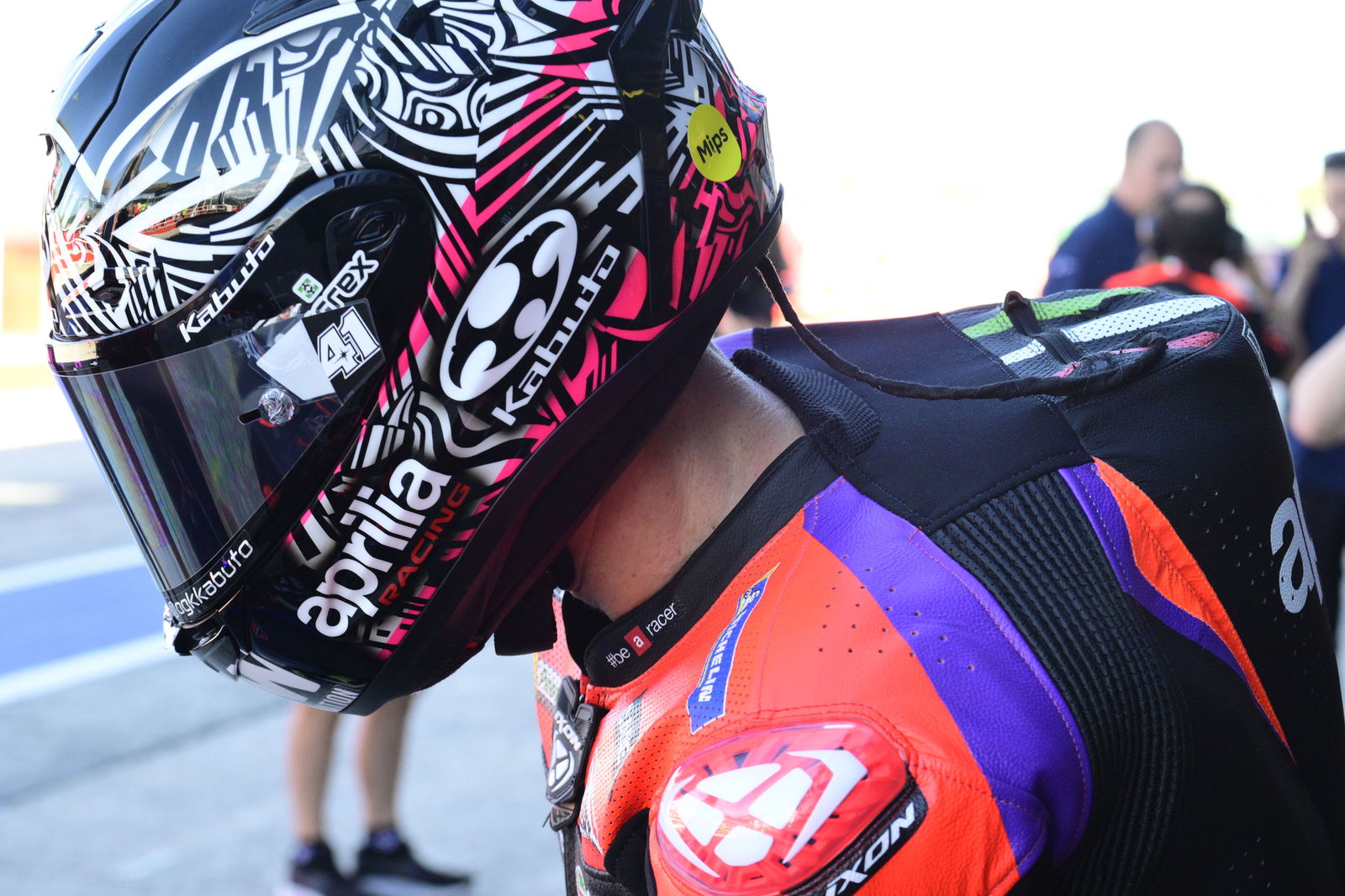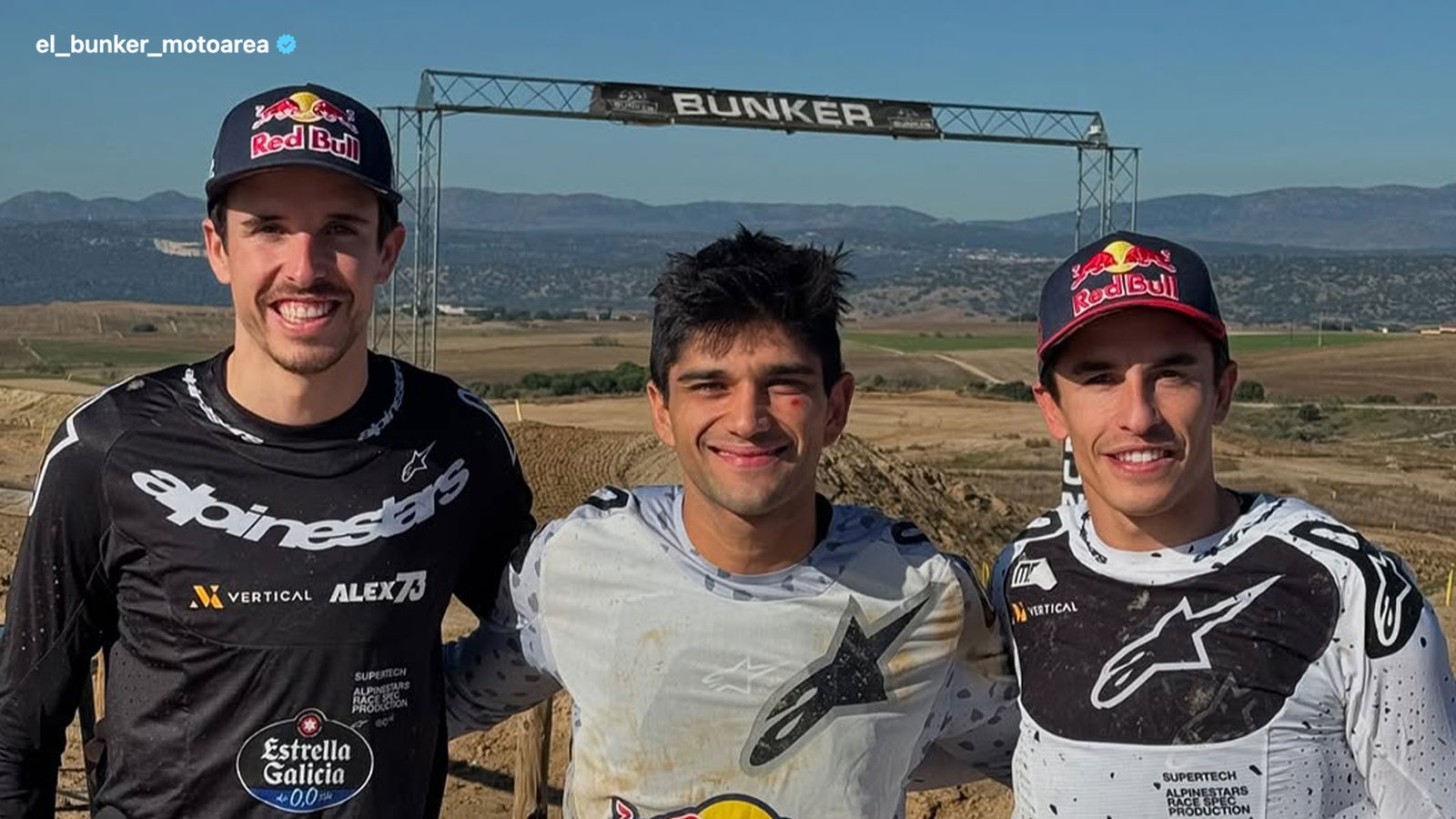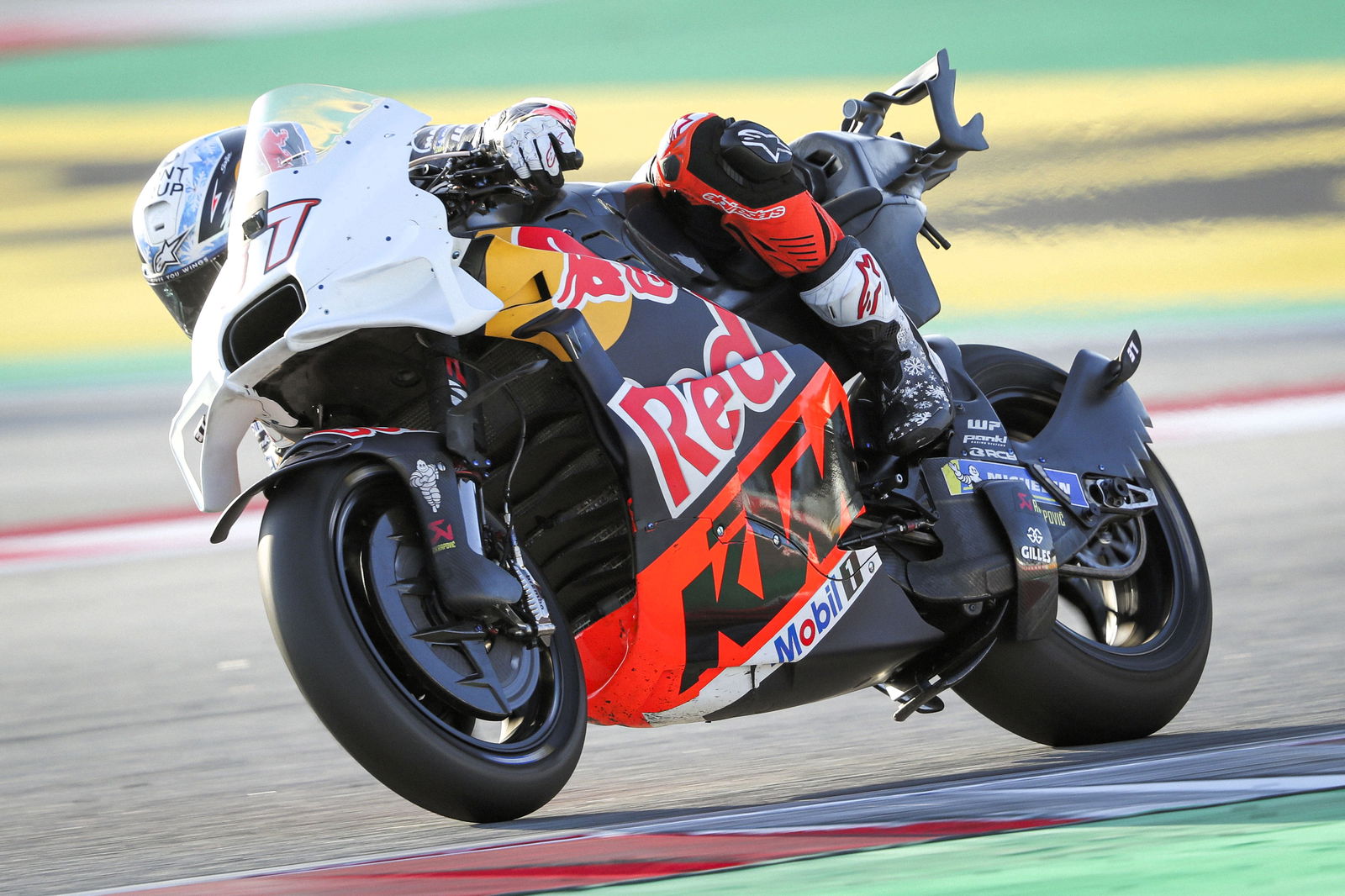Radios in MotoGP - A “dangerous” gimmick, or an “important” development?
Details emerge about how radios were used at Barcelona test

MotoGP carried out more radio testing in Barcelona earlier in November, with Ducati’s Michele Pirro publicly debuting a two-way system.
At the post-Solidarity Grand Prix test at Barcelona, Ducati test rider Pirro and the marque’s factory team manager Davide Tardozzi were spotted communicating with each other via a two-way radio.
Radio communication has been something MotoGP has been working on for a while, with initial testing focusing on a one-way system in which pre-recorded race direction messages could be sent to the riders while on the bike.
Crash.net learned at the Barcelona post-season test that all of those race direction messages had been fully recorded, while talks were underway to extend the list of messages to include those riders have beamed to their dashboards - such as track limits warnings.
This would have proved useful for 2024 world champion Jorge Martin at the Emilia Romagna Grand Prix sprint race. A dash message about a track limits warning distracted him through the fast section of corners round the back of Misano, which led to a mistake at Turn 13 that let Francesco Bagnaia into the lead, which he converted to victory.
Pirro has been something of a guinea pig for Dorna in regards to radio testing, so therefore has grown to be the most comfortable with the systems being tested. For him, this is a development in line with what we see in bike evolution through the years.
“It’s interesting, we’ve been testing the system for a while now,” he said in Barcelona. “Today [in the test] we were testing all day. I think it’s like the development of the bikes, it’s the beginning of a path and we’ll have all next year to work and have a good database to implement this system.
“I think it’s an evolution that can be interesting and important in the future. I’m glad to have contributed during these months, today we’ve tried to get as much information as possible. Then, from 2026, it will be mandatory, so it’s important to have everything we need.”
Pirro’s comment about radios being mandatory from 2026 has not been officially confirmed yet.
Crash understands that radio development will continue into 2025, but there will be no forced widespread introduction at any of the races for now. Any rider who wants to test a system - and it will likely be the one-way, pre-recorded messages one, with a two-way system between riders and race direction probably the next longer-term step after this - in a race will do so voluntarily. The system will need to have full approval from the riders, with safety being the key sticking point currently.
Some riders, like Fabio Quartararo and Maverick Vinales, have expressed a keenness for radios to be introduced having tried the one-way system in previous tests. Others don’t feel like the one-way system is ready yet, let alone two-way.
“I did it and it’s still not ready,” Francesco Bagnaia said in Barcelona. “It didn’t work when I tested it. It wasn’t working so I didn’t hear anything. Also it was disturbing me a bit. The cable to connect it is also huge and it could be dangerous. So, still not ready and I will test again when it is ready.”
It’s worth noting that Bagnaia has already come out against the idea of radios, noting after the San Marino GP that “I’m not in favour” because “we already have every input possible around the track, on the pitboard and on our dashboard.”
For Pirro, though, he believes any radio system will just be a matter of getting used to it for the riders.
Speaking specifically about the two-way system, he said: “I had already tried the one-way system in other tests. On this occasion, I tried the two-way system. It’s something new, you’re not used to it, but as far as I’m concerned it’s a matter of getting used to it.
“It’s clear that was a test, and they were talking to me all the time, so it wasn’t the best situation. But when there are important messages or things you want to change on the bike, you can foresee what kind of problems there are before entering the pits. In any case, I see it as something interesting, to develop for sure, because we’re at the beginning. But there’s time.”
While the initial systems are being developed for a safety application, the ultimate goal from MotoGP is to be able to have ship-to-shore communication between riders and the pit wall all the time - like in Formula 1 - which will add a new element to the live broadcast. Undoubtedly, this will be something new owners Liberty Media - should its acquisition of MotoGP be ratified at the end of this year - will be keen to push ahead with as it lays down its plans for growth.
There is certainly a purity debate centring around MotoGP introducing radios. At Misano in September, Marc Marquez said they were good for the show but “for the essence of the sport” it’s not a development that has a place in MotoGP.
Much of the social media and media reticence to radios is that it brings MotoGP a bit too closely to F1. While some of this is just misguided closed-mindedness, radio chatter has somewhat devalued the idea that F1 drivers are the best in the world. From a purely sporting point of view, does anyone really want to hear a driver complain to their team every time a bit of wheel-to-wheel racing doesn’t go their way?

Radios also remove instinct away from drivers. If the weather is changeable, drivers are kept well up-to-date on when rain is likely to fall and what category it will be. The decision to pit or not is generally left up to what team strategists are seeing on the lap times from other cars. It’s not often now a driver makes a seat-of-the-pants gamble.
Would it go this far in MotoGP?
The idea of a one-way system for race control messages is a good step for safety. Something similar is deployed in the World Endurance Championship, whereby race direction can inform drivers of impending Virtual Safety Cars. Of course, receiving messages while sat in a car and while leant over on a motorcycle are entirely different propositions. Riders have also expressed a desire to be able to have a system where they can warn race direction of dangers that could warrant a red flag. A two-way radio for this purpose makes sense.
The ability for teams to be able to speak to their riders and vice versa will change MotoGP.
Jorge Martin may not have made his strategic error at the San Marino GP in flag-to-flag conditions with this system in place, because his Pramac team would have been able to tell him that the rain shower was only brief.
Bagnaia and Enea Bastianini would likely have ignored any messages from their team because they knew that the Misano circuit gave off a particular smell that would have told them if the track was wet enough to change bikes. Equally, though, Martin is the one on the bike and if he still felt it was too risky to wait for the rain to ease then he would have still come into the pits.
Crew chiefs could certainly try and coach riders, telling them where they need to be faster, for example. But they also won’t have any of the sensations a rider will have on the bike, so the chances of those instructions being listened to are slim.
And even in a world of two-way radios, Honda would have still likely messed up its calculations at the 2013 Australian Grand Prix and Marc Marquez would not have come in to change bike at the mandatory limit for tyre safety, leading to him still being black-flagged.
F1 drivers get snippy when their engineers speak to them in tense moments. Given a MotoGP race is much shorter and seldom spread out in the way an F1 grand prix is, there is the very real scenario where riders simply tell their teams to not speak to them at all.
MotoGP will probably be better off without radio communication. Ultimately, though, things always change and the overall impact they will have on the racing will likely not be as massive as the doomsayers currently lead you to believe.
Sprint races were met with immense scepticism initially, but now they’ve become part of the furniture. The same will be true of MotoGP’s new logo. And when radios become widespread, the outrage over them will cool pretty quickly, as these things always do in the end.


.jpg)